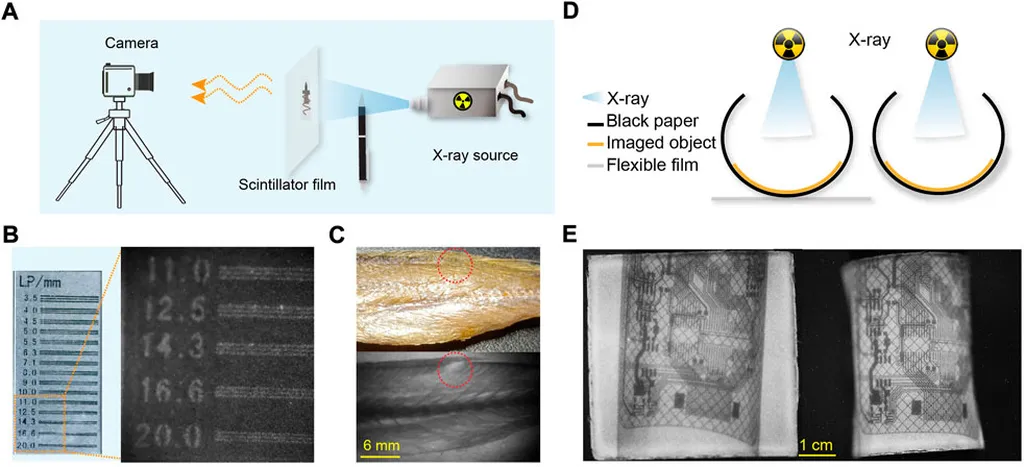In the relentless pursuit of advanced materials for extreme environments, a team of researchers led by Dr. Zhi Yang from Zhengzhou University and Chengdu University of Technology has made a significant breakthrough in the field of high-temperature scintillators. Their work, published in the journal *Advanced Powder Materials* (translated as *Advanced Powder Materials*), could revolutionize X-ray imaging techniques in industries such as oil well-logging, nuclear reactors, and industrial inspections.
Scintillators are materials that emit light when exposed to ionizing radiation, such as X-rays. They are crucial for imaging and detection technologies, but their performance often degrades at high temperatures due to a phenomenon known as thermal quenching. Traditional Cu and Mn-based perovskites, while bright, suffer from this issue. Enter rare-earth-doped perovskites, which have shown promise but lacked comprehensive study until now.
Dr. Yang and his team investigated the relationship between structural rigidity and thermal stability in rare-earth-doped 3D Cs2NaLuCl6 and 0D Cs3LuCl6 perovskites. Their findings are nothing short of groundbreaking. “We found that these perovskites exhibit thermally-stable emission due to their high Debye temperature exceeding 200 K and thermally-stable energy transfer efficiency,” Dr. Yang explained. This means they can maintain their brightness and efficiency even at high temperatures, a critical requirement for extreme environments.
The team also discovered that the emission color of the scintillators plays a significant role in their performance. “Tb3+-green emission and Ce3+/Sm3+-red emission produce brighter X-ray images than Ce3+-UV emission due to their camera-matched spectral emissions,” Dr. Yang noted. This insight could lead to the development of more efficient and effective imaging technologies.
The structural rigidity of the perovskites also impacts their performance. The 3D perovskite, with its lower structural rigidity and strong electron−phonon coupling, achieves high emission intensity but slight thermal quenching. In contrast, the 0D perovskite, with higher structural rigidity and weaker electron−phonon coupling, exhibits lower emission intensity but pronounced anti-thermal-quenching properties.
The implications of this research are vast. By bolstering the structural rigidity of Lu-halide perovskites, scientists can achieve thermally-stable luminescence, paving the way for high-temperature scintillators that can withstand extreme environments. This could lead to advancements in oil well-logging, nuclear reactor monitoring, and industrial inspections, where high-temperature scintillators are in high demand.
As Dr. Yang puts it, “Our findings prompt efforts to utilize the emission color of scintillators and bolster their structural rigidity, which could shape the future of high-temperature scintillator development.” With this research, the future of X-ray imaging in extreme environments looks brighter than ever.
The study, titled “Leveraging structural rigidity for thermal robust scintillation in rare-earth halide perovskites,” was published in *Advanced Powder Materials*, marking a significant milestone in the field of materials science and technology.

